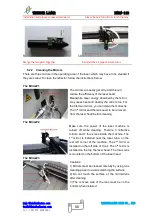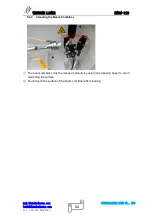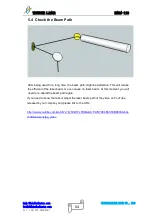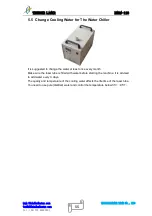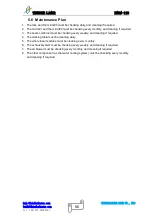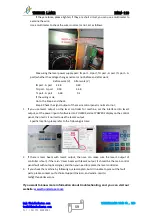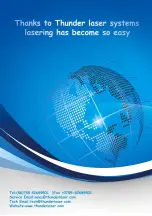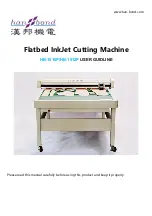
THUNDER LASER
MARS-120
www.thunderlaser.com
THUNDERLASER TECH CO., LTD
tech@thunderlaser.com
Tel :(86)755 82689501
46
4.6 For Laser Engraving
The engraving depth can easily be varied through the laser power or the speed. To
increase the engraving depth, reduce the speed or increase the power setting. This way
you increase the amount of energy per area unit. Engraving too deep, however, reduces
the quality of the details. With coated materials the required power depends of the kind
and thickness of the coating. With power set too high the individual lines become too thick
and a sharp picture cannot be achieved. The resolution of the graphics should usually be
at 500 dpi. The dpi setting (number of laser dots per inch) depends on the material. The
lower this setting is, the lower the resolution of the engraved picture will be. This, however,
reduces flaming and increases the energy of a pulse, which can improve the overall result
(e.g. when engraving some sorts of plastic materials).
1. Plastics
Plastics for engraving are available in many different colors and thicknesses and with
many different coatings and surfaces. The majority of available plastics can be well
engraved and cut with the laser. Plastics with a micro-porous surface seem to give the
best result, because less surface material needs to be removed. As most plastic materials
have a low melting point, a low pip setting should be selected to reduce the danger of
melting.
2. Acrylic
There are two different types of acrylic
– cast and extruded. The cast acrylic becomes
white or mat after engraving, the extruded acrylic remains clear. Use extruded acrylic for
engravings that are filled with paint and cast acrylic for normal engravings. Cast acrylic
can be best engraved without protection foil. It is better to engrave the entire surface with
a low energy setting.
3. Engrave the rubber stamp
The various mixtures and densities of rubber plates cause a slightly varying engraving
depth. The settings in the overview table give a good indication. Since engraving a
standard rubber material requires a relatively high laser power, the laser power is
principally set to 40% or more high and only the speed is varied. Due to their lower density,
so-called micro porous rubber materials allow a significantly higher engraving speed. Test
the rubber first, to find out the correct speed setting.
The LaserGRAV software using the engraving function, you can choose
“ramp engrave”
or common engraving, once you choose
“ramp engrave” and you will need to set the
minimum power, generally we set it to about 13%, but if you want to make it better, you
may need to test different kinds of power and speed by yourself, then you can get the best
result.
Engraving rubber produces a considerable amount of dust and terrible gas. Therefore a
well-dimensioned exhaust system and its regular maintenance are very important.



















